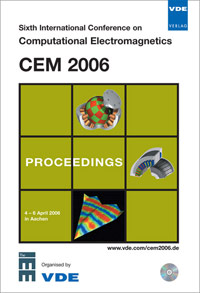Optimisation of a Multilevel Fast Multipole code for the Modelling of Installed Antennas on Large Complex Platforms
Konferenz: CEM 2006 - 6th International Conference on Computational Electromagnetics
04.04.2006 - 06.04.2006 in Aachen, Germany
Tagungsband: CEM 2006
Seiten: 2Sprache: EnglischTyp: PDF
Persönliche VDE-Mitglieder erhalten auf diesen Artikel 10% Rabatt
Autoren:
Benham, S. P.; Burbage, J. M.; Murphy, T. J. (RF & Antennas Dept., SELEX Communications Ltd, UK)
Lord, J. A. (Advanced Technology Centre, BAE SYSTEMS, UK)
Inhalt:
The RF & A Department of SELEX Communications Limited provides prime contractors and system integrators of a wide variety of air, land and sea platforms, with a proven range of EM services. Our accurate and efficient modelling capabilities are applied to these (military and commercial) platforms to analyse their EM environment. In particular, FM3D, a Multilevel Fast Multipole algorithm (MLFMA) code developed by the BAE SYSTEMS Advanced Technology Centre (ATC) in conjunction with the RF & A Department, has proved highly effective in the modelling of installed antennas on electrically large, complex platforms that are completely impracticable using conventional Method of Moments (MoM). The MLFMA applies an iterative solution to the MoM linear matrix problem and it is well known that for some cases obtaining a converged solution, using a standard approach, may prove difficult. Developments of suitable iterative solvers and preconditioners, have reduced the number of iterations needed to achieve convergence with varying degrees of success. FM3D has a choice of iterative solvers and preconditioners; however two alternative approaches have recently been developed that have significantly reduced the time taken for convergence. The first approach incorporates a small direct solution around the excited antenna as an improved initial guess to the iterative solution and the second unique technique applies a mixed field integral equation formalism that in some cases it has reduced the number of iterations by an order of magnitude. In this paper, an outline is given of these highly effective techniques together with an example of its application to a naval platform.


